Five Trees For The Senses
Text by Heather Schibli, OALA
How we connect to plants stems from a co-evolutionary dance. Trees have evolved to both attract and repel creatures that have in turn evolved to recognize these signals. Be it a fragrance that our nose begs us to follow, or a shocking display of colour that demands our attention, our perception of plants and how we connect with them shifts throughout the year. Here are five tree species that I have connected with in autumn.
SIGHT
Acer rubrum
Although not obvious during the summer and winter months, red maple’s name clearly reflects this species during the off seasons: it has cheery, red-coloured flowers and fruit in spring and its leaves are ablaze in various hues of red in autumn. Like most other deciduous trees within our landscape, red maple’s leaves begin to shift colour in response to shortened days and cooler temperatures. Slowing photosynthetic capacity signals the tree to break down its leaves’ chlorophyll proteins for reabsorption, storage, and ultimately later use. Underlying carotenoid and flavonoid pigments become visible once chlorophyll is broken down. This accounts for the yellows and oranges. Red pigment, however, is created in the fall by increased sugars and sunlight. These pigments (anthocyanins) are not present in all species. And although it is still unclear as to what purpose they serve, their presence is in response to sunlight and cooler temperatures. The best fall colour develops during cool (but not freezing) temperatures and sunny days.
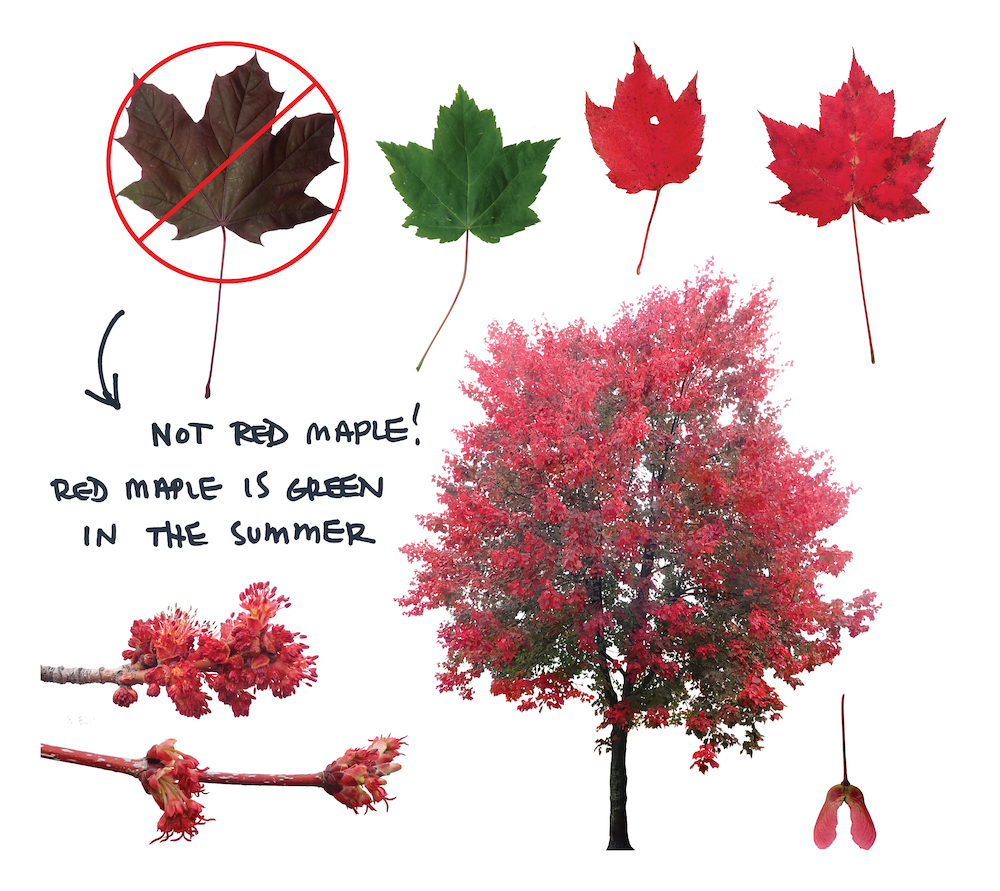
TOUCH
Hamamelis virginiana
Witch-hazel is the only Ontario native tree or shrub to flower in the fall. This, however, is only the half of it! As these plants captivate pollinators with their sparkler-like yellow blossoms, their fruits, pollinated from the previous year’s flowers, are nearly fully ripened and on the brink of seed dispersal. A few years back, I collected some witch-hazel capsules with the intention of propagating them. Left on the kitchen counter to dry and open, I was perplexed to find these capsules empty. I shared this with a colleague who chuckled suggesting I search the room for seeds. Sure enough, I discovered them scattered throughout the room: Under the kitchen table, along the opposite wall, and even in a shoe. As witch-hazel fruit capsules dry, they shrink thereby pinching the seeds within to such an extent they are forcibly expelled. Referred to as ballistichory (ballistic seed dispersal), these seeds are projected as far as 10 metres at a speed of 12.3 metres per second. Take cover!
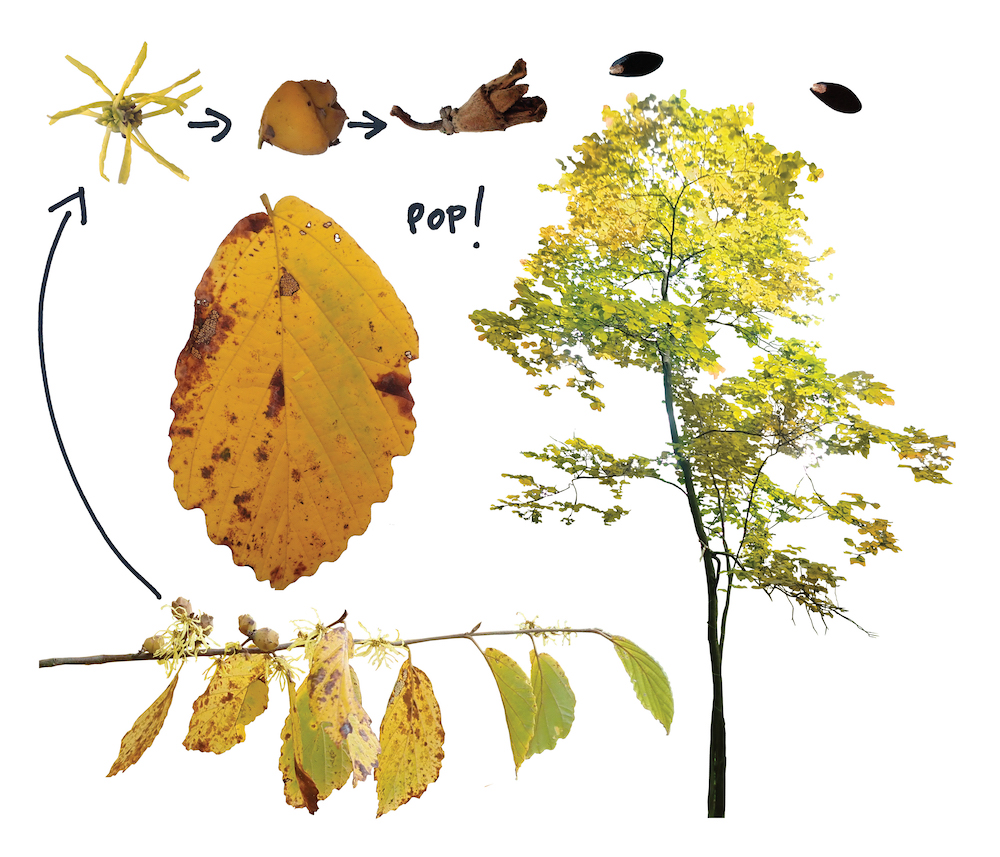
SOUND
Pinus strobus
While backcountry camping in Algonquin Park one September a few years back, I recall enjoying the solitude of residing at the only campsite on the lake. When motors, music, and general human-derived sounds like barking dogs cease, other more subtle sounds emerge. On this particular site however, a relatively loud sound prevailed: that of the pine sawyer beetle. Sawyer is the name attributed to someone who saws. And, like a sawyer, these larva chew away at recently felled and rotting pines. Also referred to as long-horned beetles, these grubs sport a remarkable size that is only overshadowed by their most impressive ability to gnaw through solid wood. On this occasion, we shared our site with the white-spotted sawyer (monochamus scutellatus), a native beetle often mistaken for the invasive Asian long-horned beetle.
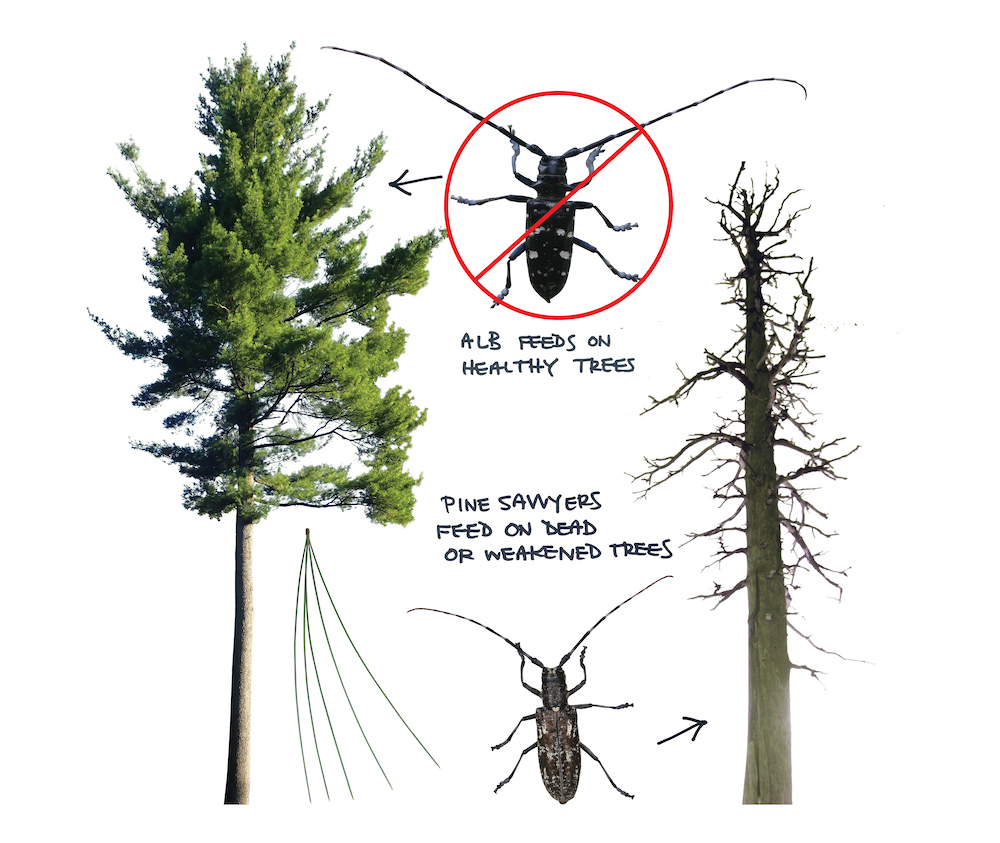
TASTE
Asimina triloba
A Carolinian forest species, this tree is rare in Ontario, occurring only along the southern-most part of the province. And yet, in recent years, the fruit of this species has become so popular with permaculture and native plant enthusiasts that it can now be found planted in urban centres throughout southern and eastern Ontario. Pawpaw fruit is delicious! Regarded as the largest native North American tree fruit, its flavour is reminiscent of mango and banana. With a custard like consistency, the fruit can be scooped with a spoon, cut into chunks, or slurped through a small cut in the flesh. Why isn’t this fruit available at the local grocery store? It won’t readily ripen if picked prematurely and bruises easily during transport. If you are lucky, you might be able to find some at your local farmer’s market.
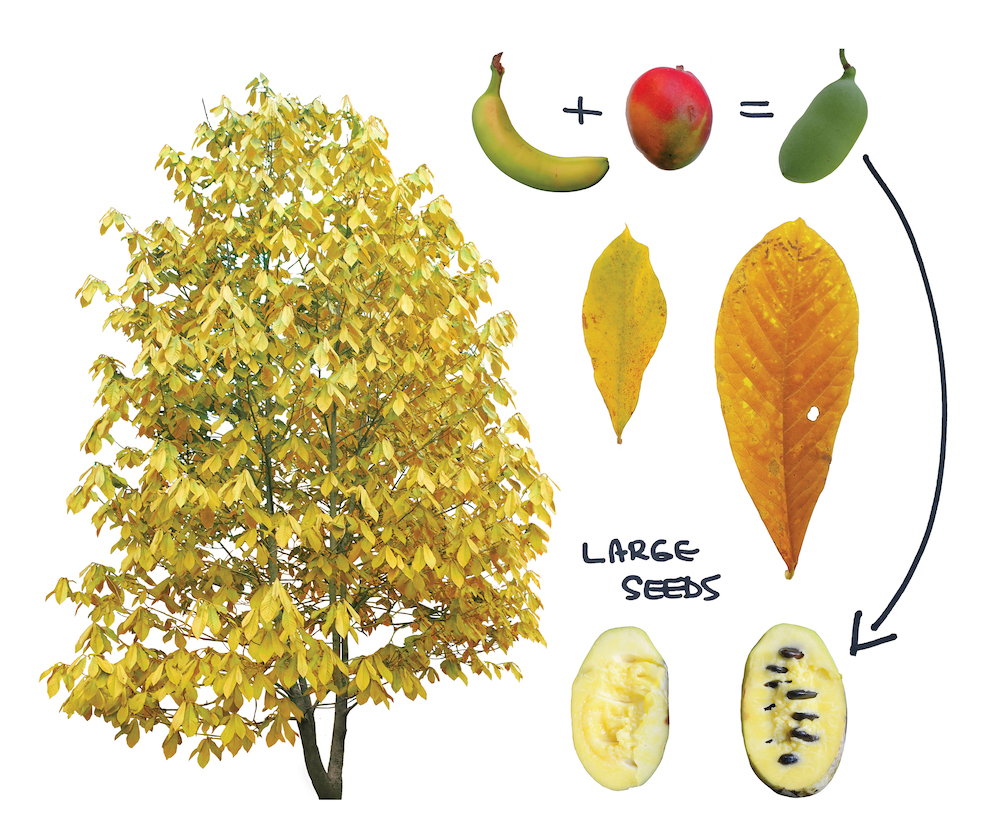
SMELL
Cercidiphyllum japonicum
With the onset of cooler fall temperatures and impending leaf senescence, complex sugars stored in the katsura tree’s leaves begin to break down for reabsorption and storage. A byproduct of this process is the release of the molecule maltol, which happens to be the same chemical compound found in cake, cotton candy, warmed milk, breads, cocoa, and coffee. This species originates from Japan, but has been planted in North American urban centres for over a century. The University of Guelph Arboretum has a small grove of these trees that I make a point of visiting each fall to inhale their delicious caramel-like scent.
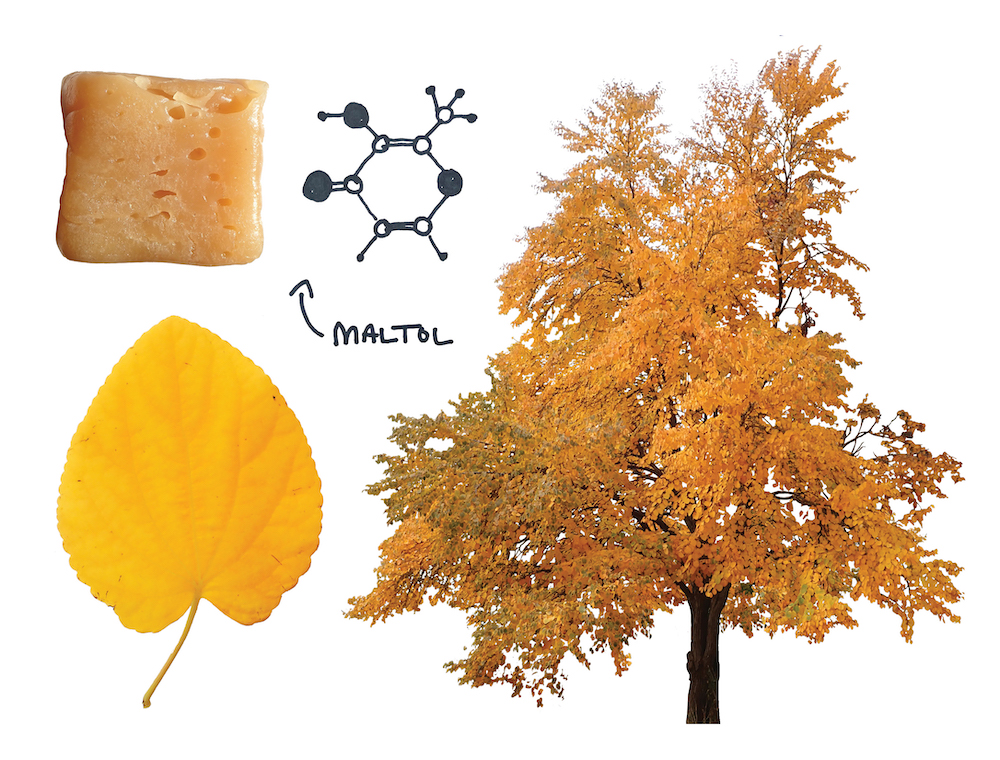
BIO/ Heather Schibli, OALA, Originally from eastern Ontario, now lives in Guelph Ontario where she works as a Landscape Architect, is an arborist, and ecologist at Dougan & Associates Ecological Consulting & Design. Heather is currently developing a visual tree guide, which combines her two passions of design and the environment.
